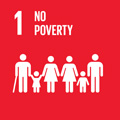- Docente: Gabriele Brancaleoni
- Credits: 3
- Language: Italian
- Teaching Mode: Traditional lectures
- Campus: Bologna
- Corso: First cycle degree programme (L) in Educator in Childhood Social Services (cod. 9083)
-
from May 08, 2025 to May 23, 2025
Learning outcomes
- will be able to apply the specific techniques that they have learned both independently and in the context of projects organized by institutions;
- will know how to apply the specific knowledge learned to a variety of types of service;
- will know how to evaluate the limitations and benefits of the technical tools learned;
- will know how to transfer the technologies learned to a variety of contexts by making personal modifications and additions to them.
Course contents
- Children’s literature, quality and complexity
Literary text: analysis, meanings, storytellings, poetry, picture…
Storytellers, children’s theater, setting and education.
Workshop: body and gesture, word and voice.
Readings/Bibliography
This books are to be considered as proposals for further study:
-
M. Bernardi, R. Frabetti, Naviganti. Teatro e ragazzi, incontri di laboratorio, incontri di vita, edizioni ETS, Pisa, 2013
-
R. Frabetti, M. Marina Manferrari, Un alfabeto di 21 lettere, Pendragon.
-
R. Frabetti, Il nido e il teatro, Pendragon.
-
A cura di Roberto Frabetti, Focus – Il teatro per l'infanzia, da p. 3 a p. 29, in Infanzia, n°1, 2015, Spaggiari edizioni, Parma.
-
M. Bernardi, La raccolta completa di fiabe e la poetica della sua voce narrante, articolo in rivista, RPD- Ricerche di pedagogia e didattica, Journal of Theories and Research in Education, Vol. 11, N°3, 2016.
-
M. Bernardi, Corpo – parola. Parola- corpo: una metafora di rigenerazione. rivista Infanzia, n° 4/5, luglio/ottobre 2016.
-
G. Brancaleoni, In bilico su una linea immaginaria. Letteratura per l'infanzia e metafore del limite. Edizioni Sinestesie, Avellino, 2024. (free download at: https://www.scuoladipitagora.it/libreria/in-bilico-su-una-linea-immaginaria-open-access )
Teaching methods
participation in the narrative setting
Storitelling Reflection on narrative communication
theoretical reflection
Body and vocal expressiveness of the adult
Assessment methods
Evaluation of participation in the laboratory
Teaching tools
Book, stories, images, pictures, music, theatrical objects
Office hours
See the website of Gabriele Brancaleoni
SDGs




This teaching activity contributes to the achievement of the Sustainable Development Goals of the UN 2030 Agenda.
